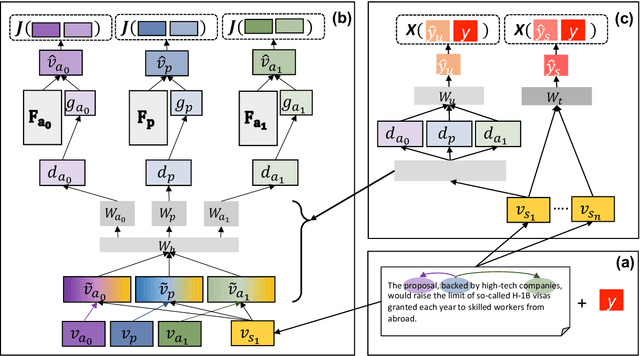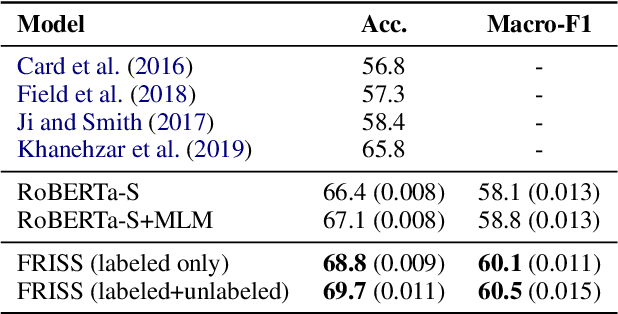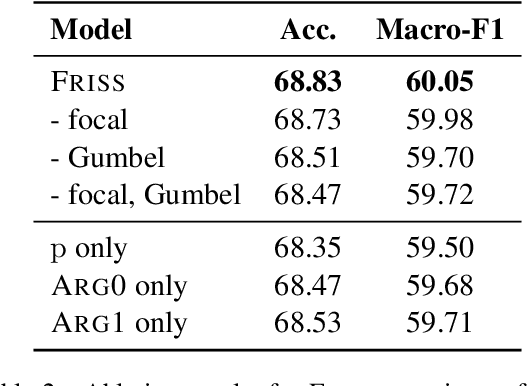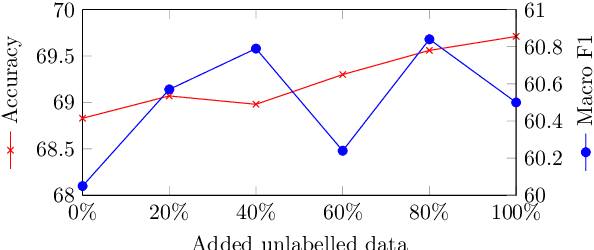Shima Khanehzar
Conflicts, Villains, Resolutions: Towards models of Narrative Media Framing
Jun 03, 2023Abstract:Despite increasing interest in the automatic detection of media frames in NLP, the problem is typically simplified as single-label classification and adopts a topic-like view on frames, evading modelling the broader document-level narrative. In this work, we revisit a widely used conceptualization of framing from the communication sciences which explicitly captures elements of narratives, including conflict and its resolution, and integrate it with the narrative framing of key entities in the story as heroes, victims or villains. We adapt an effective annotation paradigm that breaks a complex annotation task into a series of simpler binary questions, and present an annotated data set of English news articles, and a case study on the framing of climate change in articles from news outlets across the political spectrum. Finally, we explore automatic multi-label prediction of our frames with supervised and semi-supervised approaches, and present a novel retrieval-based method which is both effective and transparent in its predictions. We conclude with a discussion of opportunities and challenges for future work on document-level models of narrative framing.
Framing Unpacked: A Semi-Supervised Interpretable Multi-View Model of Media Frames
Apr 22, 2021



Abstract:Understanding how news media frame political issues is important due to its impact on public attitudes, yet hard to automate. Computational approaches have largely focused on classifying the frame of a full news article while framing signals are often subtle and local. Furthermore, automatic news analysis is a sensitive domain, and existing classifiers lack transparency in their predictions. This paper addresses both issues with a novel semi-supervised model, which jointly learns to embed local information about the events and related actors in a news article through an auto-encoding framework, and to leverage this signal for document-level frame classification. Our experiments show that: our model outperforms previous models of frame prediction; we can further improve performance with unlabeled training data leveraging the semi-supervised nature of our model; and the learnt event and actor embeddings intuitively corroborate the document-level predictions, providing a nuanced and interpretable article frame representation.
 Add to Chrome
Add to Chrome Add to Firefox
Add to Firefox Add to Edge
Add to Edge